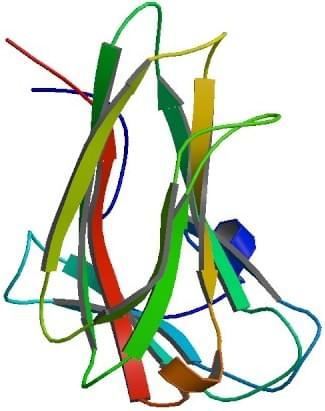Creative Biolabs provides unique custom CBM4-2 scaffold library construction services. Our scientists are experts in scaffold protein research and we are pleased to tailor the specific need of each customer with the best project design.
CBM4-2, represents the second family 4 carbohydrate binding module, is an 18-kDa protein derived from the xylanase 10A (Xyn 10A) of thermophilic bacterium Rhodothermus marinus. Carbohydrate-binding modules (CBM), previously known as cellulose-binding domains, referred to a group of proteins found in carbohydrate-active enzymes. CBMs have natural binding diversity and are most common non-catalytic modules connected to a variety of glycoside hydrolyzing or modifying enzymes.
CBM4-2 is an ideal choice as a diversity-carrying scaffold. The structure of CBM4-2 consists of a twisted β-sandwich motif formed by a five-stranded β-sheet and a six-stranded β-sheet, and an extensive hydrophobic core. The whole 11 β-strands are arranged in an antiparallel fashion without disulfide bonds. It is a well characterized module with defined substrate affinity and specificity. This module is also thermostable and suitable for evolution of new binding properties. In this way, CBM4-2 phage display libraries based on restricted variation of the carbohydrate binding site can be developed. The type B topology of CBM4-2 binding site is displayed for the selection of different carbohydrate polymers and glycoproteins, such as birchwood xylan and human IgG4. In addition, CBM4-2 is also recognized by the high productivity and the high yield of purification. Therefore, considering with the stable β-sheet structure which can remains largely intact for binding site mutations, CBM4-2 is suitable scaffolds for creating variants and expected to play a potential role in different downstream biotechnological applications.
Phage display technology is an exogenous gene expression method through fusing the target genes to bacteriophage coat proteins then displaying on the phage surfaces to select specific binders. It has been used as a major approach in selecting highly specific scaffolds for therapeutics discovery. Differ from other companies, our scaffold libraries are built by our proprietary Hi-Affi™ phage display platform. This platform has improved the diversity and affinity of specific protein scaffolds by trimer codon technology and NNK method, which enable our scaffold libraries to achieve 100% precise mutant and over 1010 diversity.
As an industrial leader of scaffold protein research, Creative Biolabs has successfully provided more than 50 kinds of scaffold libraries for our global customers. Our scientists are confident in meeting each required specification from customers with high efficiency and quality service.

Fig. 1 The solution structure of the CBM4-2 carbohydrate-binding module from a thermostable Rhodothermus marinus xylanase. (PDB ID: 1K45)
All listed services and products are For Research Use Only. Do Not use in any diagnostic or therapeutic applications.